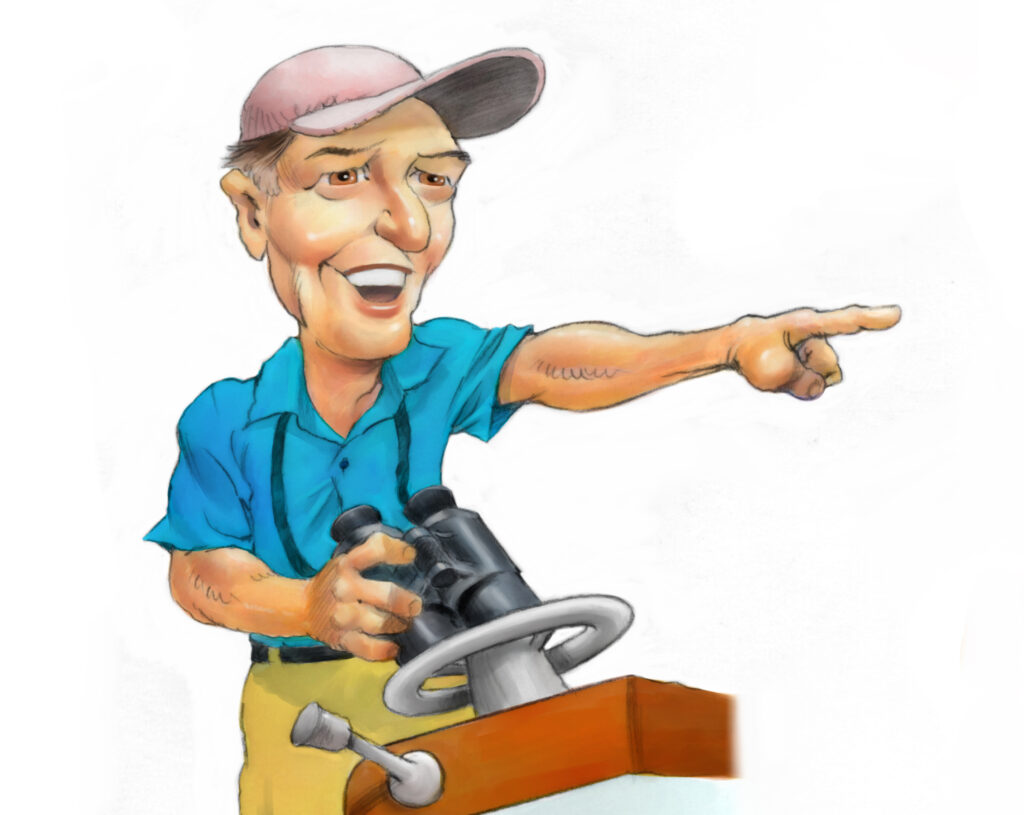Table of Contents
The Dawn of Modern Offshore Sportfishing Boats: A Historical Perspective
If you’re new to the offshore sportfishing boat world, it may seem like boats have always cruised at 30 knots or more and come with a dazzling array of electronics and other gear that rivals what you might find in your home. But those of us who’ve been around this business for a long time remember that it wasn’t always so.
It can be difficult to pinpoint exactly when modern offshore sportfishing boats arrived on the scene, but the Rybovich family generally gets credited with designing and building the first of what would later become the truly modern boats we know today, either inventing or refining now-commonplace fishing options like tuna towers, outriggers, fighting chairs, cockpit controls and much more.
That happened in the late 1940s, and while other now-famous boat companies like Merritt’s soon joined the party, technology changed slowly for several decades. Diesel engines weighed a lot and produced little horsepower, so gasoline engines powered many of the early boats, with plentiful and cheap gas easy to come by. Boats were smaller too, mainly because of these limitations on power. A 40-footer seemed large by most standards, and since most boats fished locally, that size proved sufficient.
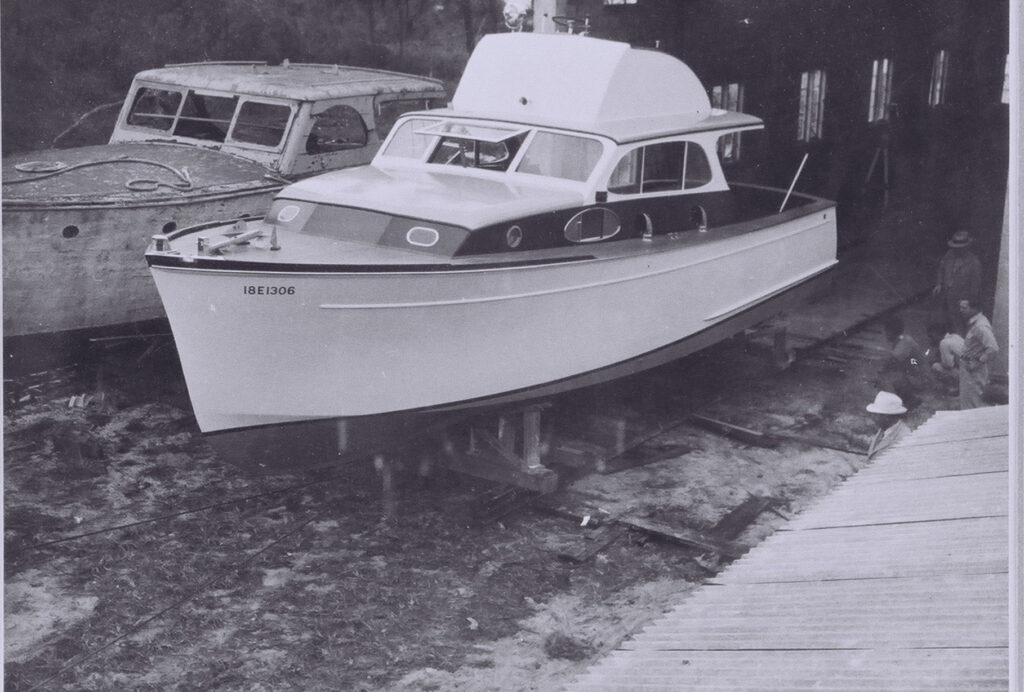
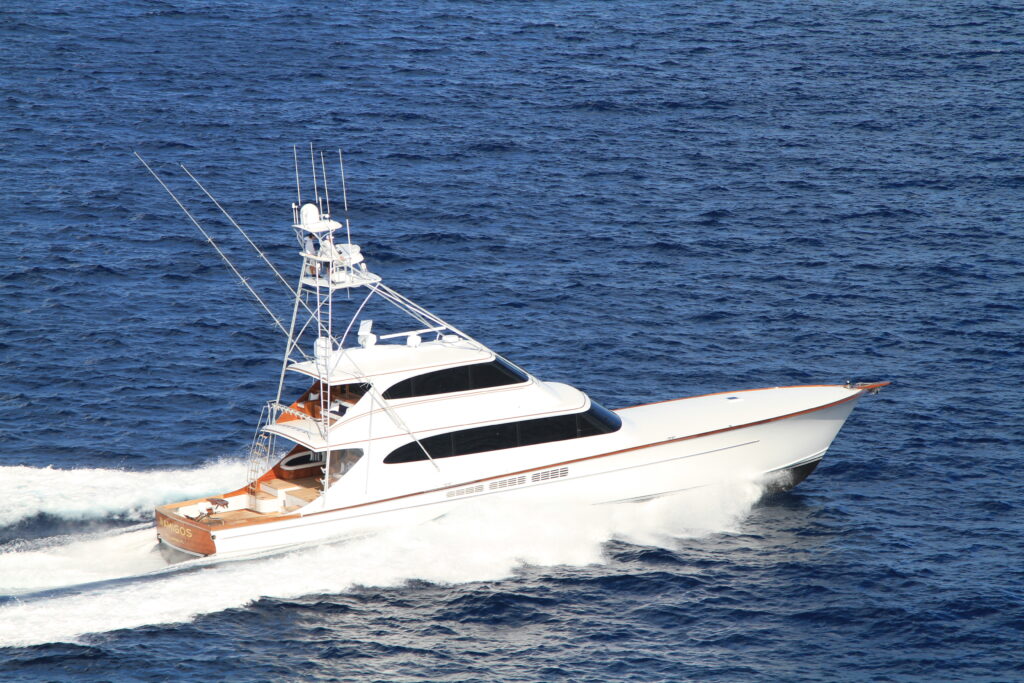
Technological Advances: Paving the Way for Larger, Faster Vessels
“While fishing on our new Viking 90, it has been amazing to reflect on the fact that our first demo boat was a Viking 40,” said Pat Healey, President and CEO of the Viking Yacht Company. “Thirty years ago, I would have never imaged that I would be billfishing on a 90 Convertible. It’s truly unbelievable how far we’ve come. The growth of our boats across our 20-plus models has been driven by more horsepower supplied by the diesel engine manufacturers. And the availability of higher-horsepower outboards has fueled the incredible success and growth of our Valhalla center consoles.”
Early builders used wood exclusively, but fiberglass appeared on the scene in the 1940s, although it didn’t show up in production sportfishing boats until the early 1960s. That technological development launched a philosophical rivalry, which continues to this day. You can still buy wood boats of course, but fiberglass became a permanent and dominant part of the boat-building scene due to perceptions of lower maintenance and durability.
The Fiberglass Revolution: From Wood to Modern Materials
Early fiberglass boats weighed more than wood boats, of course, as builders experimented with lamination schedules in search of the right mix of glass and resin. But it didn’t matter as much since all boats ran slow and cheap fuel made it affordable. The world soon changed, however, and with it, the boat-builders adapted as well.
The Power Upgrade: How Diesel Engines Transformed Boat Speeds
The manufacturers of diesel engines began to figure out how to squeeze additional horsepower out of existing blocks, and powerplants that once provided anemic power-to-weight ratios, suddenly became more powerful. Turbochargers rammed more air into the combustion mix and larger injectors added more fuel to that load. Gasoline engines suddenly seemed like a bad option, and diesels became the predominant power of choice.
Computerized engine control enabled builders to get even more power out of the diesels, and while they started by adapting older designs like the two-stroke Detroit Diesels that so many boats came with in the beginning, they also started designing all-new engines from scratch. These featured major advancements that went far beyond simple electronic control, including electronic fuel injection and then common-rail injection systems and full computer control.
These developments brought to market diesels with extremely high power-to-weight ratios, which featured greatly improved fuel economy and reduced emissions as well. In a relatively short period of time, much higher speeds became a real possibility and the average size of sportfishing boats began to grow. But with these new engines, other changes became necessary.
That’s because those new engines got mounted in older hulls at first, with surprisingly bad results at times. The early sportfishermen weren’t designed to go fast: Many folks considered 18 to 20 knots a respectable cruise speed, but when you substantially increased horsepower and that same boat would now do 28 knots, the boats sometimes exhibited unexpected seakeeping tendencies. Someone once compared driving an early flat-bottomed sportfishing boat refitted with high horsepower diesels to “driving an out-of-control surfboard.”
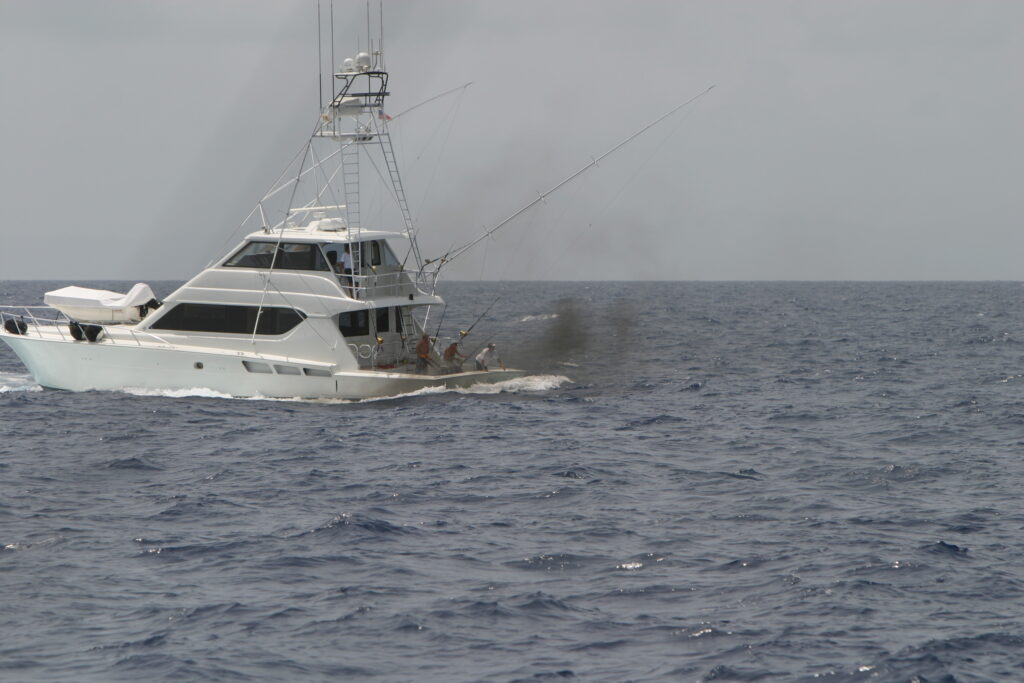
Design Innovations: Crafting Boats for Enhanced Performance
Naval architects began designing modern boat bottoms built specifically to handle the new power, with incredibly impressive results. Computers became part of the entire process, from hydrodynamic hull modeling to computer assisted design and manufacturing (CAD/CAM) of entire boats from the ground up. This both reduced weight and improved aerodynamic and hydrodynamic performance, as has the near ubiquitous use of high-tech composite coring materials.
“I started in the boatbuilding business about 40 years ago, when designs were done on a drafting board and then transferred to a loft,” said Healey. “I was actually involved with helping in the lofting aspect of this process. Then we went into designing boats using a computer and building scale models that were tank tested at the Stevens Institute of Technology in Hoboken, New Jersey. These advancements have increased the ride quality, efficiency, speed and dryness of our hulls tremendously, and stand out as the main reasons for the performance success of our boats today.”
Healey adds that computers have also drastically increased the efficiency of modern hulls. “Now we have Computational Fluid Dynamics (CFD),” he said, “and it is truly amazing. We have three different programs that we can run simultaneously over a weekend and complete upwards of 25 sea trials with different modifications to the bottom of a prototype.”
“I’m reminded of an old picture of Tommy Rybovich in a 13-foot Boston Whaler, towing a scale model of his hull to check the ride,” adds Jim Turner, President of Release Boatworks. “Today, designing in CAD and being able to run computer simulations allows us to make changes to everything from hull shape to equipment location before we ever cut the first jig.”
“The increase in engine horsepower and efficiency has allowed the boats to get larger,” said Randy Ramsey, VP of Operations for Jarrett Bay Boatworks. “Not that long ago we were delivering boats that cruised 20 knots, then it was 30 and now the baseline seems to be 35 knots. I would predict as we see horsepower increase, we will see the same thing happen with boat size and performance. At one point, a boat in the 40-foot range was seen as the perfect size for fishability, but with higher horsepower and joystick controls, we see boats in the 90’s that are just as nimble.”
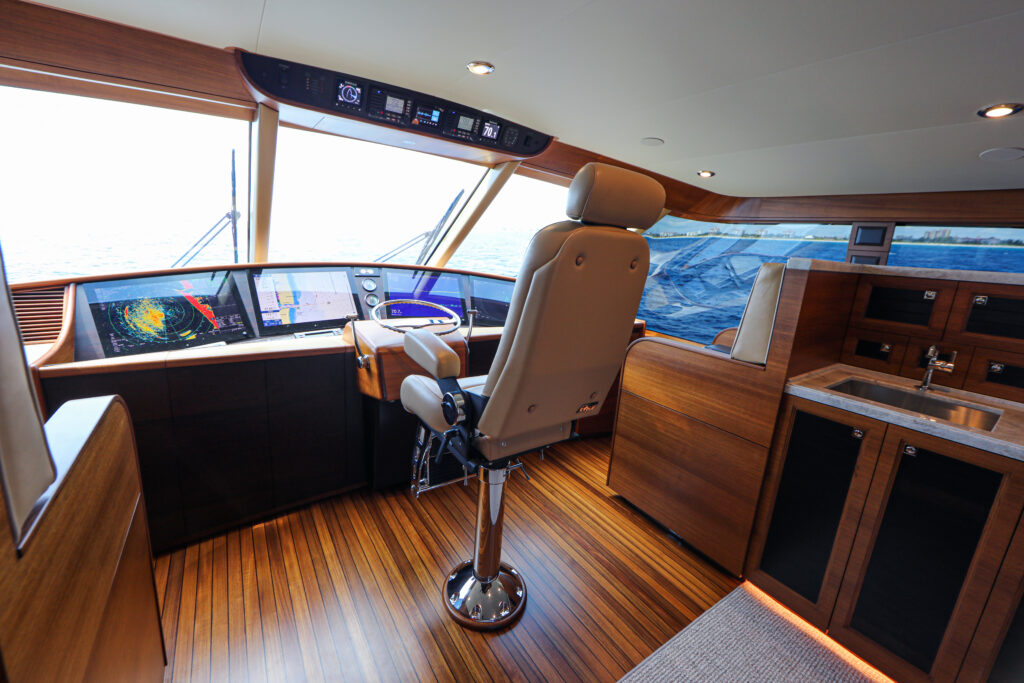
The Electronic Age: Navigational and Fishing Technology Leaps Forward
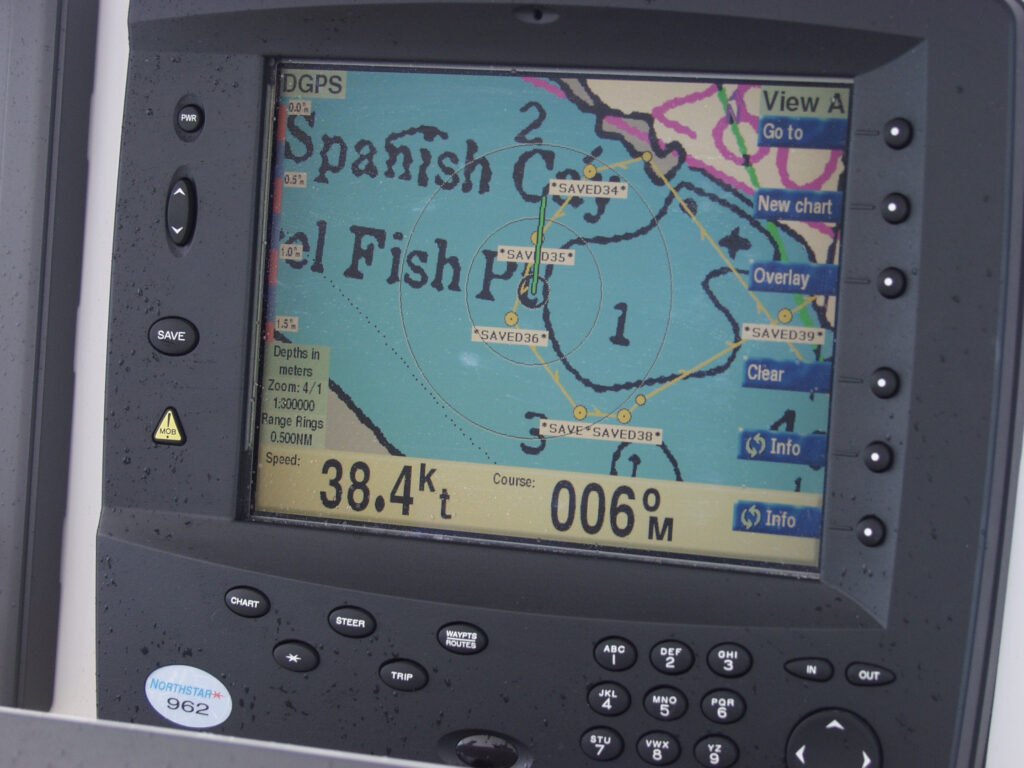
While all of this went on, electronics manufacturers innovated as well. Loran-C arrived in the 1980s, and for the first time, many of us had an instrument to tell us where we were and where we should go. GPS followed in the 90s, eventually replacing Loran, and these days many people don’t remember the days of paper charts, plotting and stopwatch runs. The electronics revolution continues, with high-tech digital radars, CHIRP sounders and hyper-accurate charting systems that show cartographic areas in hyper-detail. Side scan sonars now enable captains to spot schools of tuna and even individual billfish far off to the side of the boat.
Satellite communication has become commonplace and more affordable to a greater number of owners, greatly increasing safety as well as the ability to simply stay in touch with family and business associates. And more recently, the creation of Starlink internet service made possible through the SpaceX program will likely further revolutionize communications at sea. The single-sideband radio (remember those?), while still used in more remote parts of the world, will probably go the way of the horse and buggy at some point
Old-timers sometimes argue that much of the skill has been lost from fishing and navigation because of these developments. Navigation has become effortless and mindless, too easy perhaps, and I would argue that the ability to dead-reckon remains a vital skill in which all offshore skippers should be competent. But having been at the helm many times myself while approaching an unfamiliar area just before sunset without a chart plotter, I can tell you a little navigation help would have been welcome. Likewise, on one of the many slow days of trolling I’ve endured, some enlightenment as to where the fish swam would have been great too. Whether we like it or not, technology will only add more to the offshore experience as time goes by.
Beyond Speed: How Modern Technology Enriches Offshore Fishing
In addition to the aforementioned technological developments, myriad other changes have occurred in boating systems at the same time. While early boats had relatively simple systems onboard, today’s modern sportfisherman resembles a small city, with extremely diverse and complex systems aboard that must be understood in terms of both operation and maintenance. The list of available options seems to grow exponentially every year. These include conventional, older systems like air conditioners, generators, livewells, freezers and refrigeration spaces. But they now also include watermakers, chillers, ice chippers, satellite communication systems, advanced alarm systems, single-lever electronic controls, gyroscopic stabilizers and much more. And as with most everything else onboard, computers control most of these.
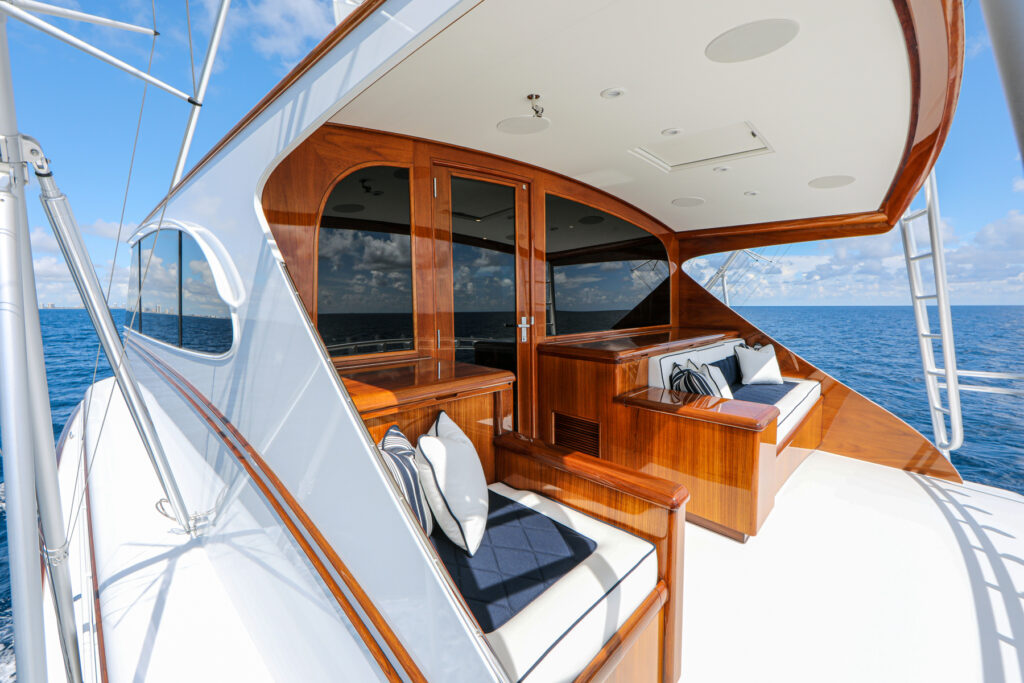
A New Era in Boat Design: Blending Aesthetics with Functionality
Finally, boat designs have evolved too. Lines have become more sleek in general, and comfort items like cockpit mezzanines have greatly enhanced the fishing experience. “In 1995, I visited Roy Merritt’s boatyard in Pompano Beach, Florida, and we spent an afternoon together,” said Pat Healey. “I was there to see a mezzanine on one of his new boats, along with some of the other innovative concepts being used in custom boatbuilding. When I left, my head was spinning. But I was determined to incorporate these features into a production boat, beginning with our iconic Viking 55, including mezzanines, single-lever controls, cockpit fish box and drink box refrigeration, extended bridge overhangs and bridge lengths, and frameless salon and aft bulkhead windows. Many of the custom boatbuilders were doing an excellent job with their engine rooms, so I also focused on engine room installations and their detailing.”
Almost every sportfishing boat built today leaves the factory with some sort of mezzanine arrangement, and the same can be said about Seakeeper stabilizers. “The Seakeeper may be the best example of an option that is no longer seen that way but is seen instead as a mandatory part of the build,” said Randy Ramsey. “Boats that don’t have them installed are still designed to accommodate one at some point.”
“There aren’t many pursuits in life where you can blend art and technology,” adds Jim Turner. “Boat building is certainly one of them. I think back to two of my boats, a 16-foot Old Town cedar-strip, canvas-covered canoe and my 37 Merritt. Both as low-tech as could be, both works of art. If modern technology helps me to build something that will mean as much to someone as those meant to me – I’m all in.”
Modern boats have surpassed their predecessors in many ways, and while many of us may pine for “the good old days,” it’s hard to deny that when it comes to sportfishing boat design, performance and functionality, these are those days.
Don’t Forget to Check Out Our Sportfishing Job Board! Did You Know? It’s the perfect platform for seeking skilled captains and mates. Whether you’re on the hunt for your dream team or looking to join one, your next big adventure begins here. Explore the opportunities now! Click Here
Dive Deeper into the World of Sportfishing
Unlock Exclusive Savings: Enjoy 50% Off Your Subscription!
Are you ready to explore the thrilling world of sportfishing from the comfort of your home? Subscribe now and embark on a journey filled with captivating stories, expert insights, and insider tips. Choose between our digital or print edition and secure an incredible 50% discount on your subscription.
Subscribe today and get ready for an adventure like no other. Click here to subscribe and elevate your sportfishing experience with InTheBite Sportfishing Magazine.







